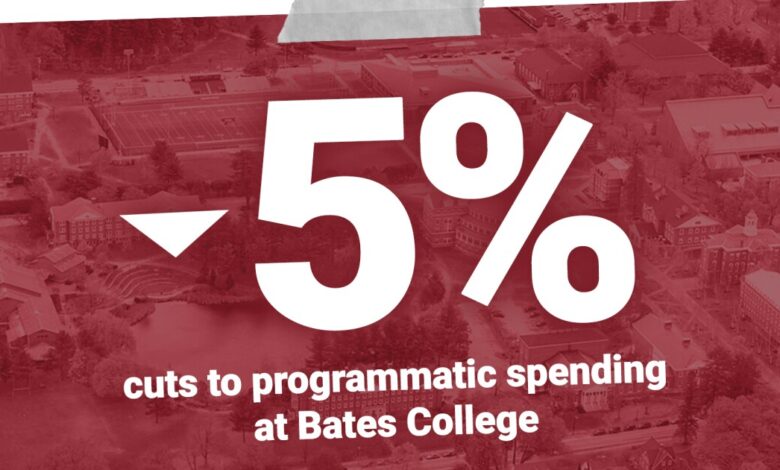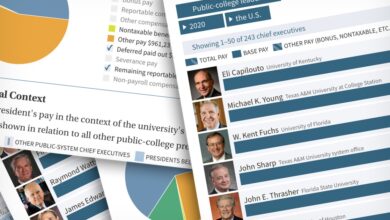Why One Wealthy College Says It Needs to Cut Costs

Bates College occupies a fairly rarefied perch in higher education. Around half the freshmen who attend the small private college in Maine pay the full $78,000 price tag for tuition and room and board. It boasts a 14-percent acceptance rate, has increased its application volume by 41 percent over the past decade, and maintains an endowment valued at over $400 million.
And so it raised eyebrows last week when Bates announced that it would be cutting its programmatic, non-personnel spending by 5 percent this year. Typically, institutional announcements about the need to cut costs tend to be accompanied by dire warnings about the financial road ahead. But this doesn’t seem to be the case at Bates, where Geoffrey S. Swift, the vice president for finance and administration, described the college’s financial fundamentals as healthy. “It may seem contradictory to hear that the college is financially strong, while also communicating increasing economic stress,” he acknowledged.
“But the economic environment is changing, and we need to prepare ourselves to adapt to new circumstances,” Swift went on to write.
What are those changing circumstances, and what does Bates’s assessment of the economic environment suggest about the road ahead for higher ed? Here are some takeaways:
Yes, Bates is financially strong.
A lot of private institutions in the Northeast are facing increasing competition for students. But enrollment at Bates, which is entirely undergraduate, has remained stable throughout the pandemic, at about 1,800 students. And, while the average discount rate at private colleges soared to 49 percent for undergraduates in 2021-22, at Bates it’s between 25 and 30 percent. Last August, the college concluded a five-year, $345-million fundraising campaign. Those gifts and pledges, paired with historic investment returns from the college’s endowment, yielded an additional $3.1-million allocation from that pool of funds. All told, Bates anticipated drawing $20 million in 2022-23 from its endowment to help cover its $130-million operating budget.
But the effects of inflation are real.
Since the 2020 fiscal year, Bates’s operating costs have grown by $15 million, largely propelled by rising instructional costs as well as spending on student services and auxiliary enterprises. Swift also said the institution had budgeted an additional $1 million for employee health care and another $1 million for utilities.
“We are experiencing pressure on health care, utilities, food, travel, and other core costs that are growing faster than our ability to increase revenues,” Swift wrote.
Starting in 2021, the costs of goods and services nationwide started to rise at rates reminiscent of the 1970s and 1980s. And for the entirety of 2022, the year-over-year inflation rate never fell below 7 percent, eventually topping 9 percent last June.
Bates is hardly alone in confronting inflationary pressures. In Iowa, regents overseeing the state’s three public universities voted to raise tuition by 4.25 percent, citing inflation as a cause. Trustees at Pennsylvania State University took a similar approach, approving a 5-percent tuition-rate increase. And Robert A. Brown, president of Boston University, had this to say when he announced that tuition would go up by 4.25 percent for the coming academic year: “We are caught in an inflationary vise.”
The cost of paying staff has increased as well. According to the Bureau of Labor Statistics, wages and salaries for higher ed’s work force rose nearly 4 percent between the third quarters of 2021 and 2022, though for workers, the buying power of their pay actually fell by 4 percent during the same period.
In recent years, tuition hasn’t risen as fast as inflation has.
While inflation has soared, tuition costs across the country barely budged, a continuation of a decade’s long trend. Between August 2021 and August 2022, out-of-pocket college-tuition costs for households climbed by 2.79 percent during that 12-month span, according to a Bureau of Labor Statistics analysis.
This has been true at Bates, too. The single fee (tuition, room and board) has grown at about 3 percent per year. The college is aware that rising costs in the economy have also proved challenging to current and prospective students, said Mary Pols, a spokeswoman for the college. That’s all the more reason, she said, that Bates needed to keep increases to its single fee as reasonable as possible.
Administrators and faculty at Bates have a lot to navigate.
How exactly such spending cuts are to be implemented remains a cause for concern for some Bates faculty members, like Keiko Konoeda, a lecturer in Japanese. Konoeda said she would like the college’s work force to be more involved in the decision-making process that led Bates to reassess its budget projections. In October 2021, a group of employees at Bates sought authorization from the National Labor Relations Board to form a union with the Maine Service Employees Association. Konoeda, a supporter of this pro-unionization effort, said she believed a unionized Bates labor force would afford the college’s employees greater input on financial matters at the institution.
“Our unionization drive isn’t only about asking for pay or better compensation, but it is coming out of the overall lack of communication or our involvement in decision-making.”
Bates has argued that the formation of a union would change the relationship between the college and its employees from “one where you negotiate the terms of your employment individually with your manager to a process where an outside party represents your interests as part of a group.”
Beyond the specific questions regarding unionization and labor, institutions that find themselves in situations like that of Bates tend to find savings through the regular cycle of attrition of its workers. Another strategy: reducing institutional financial-aid packages, said Phillip B. Levine, an economist at Wellesley College who has studied post-secondary-education pricing. This way, the sticker price at an institution remains stagnant, but the cost to students or their families rises. But there’s a tradeoff — lower tuition discounting can reduce college-attendance rates overall.
“If you charge people more than they can afford, they can’t go,” Levine said.
Source link






